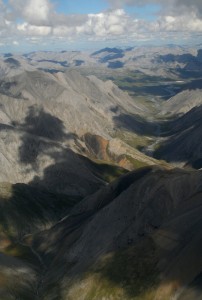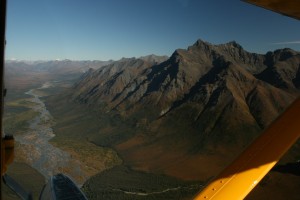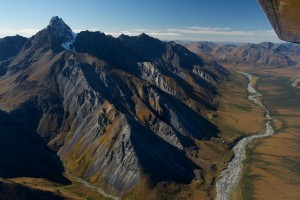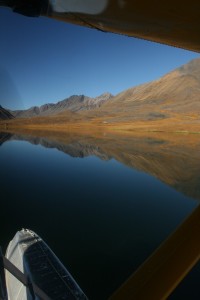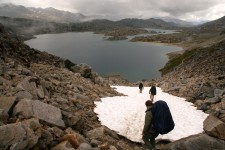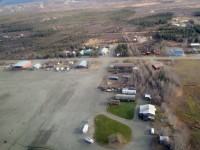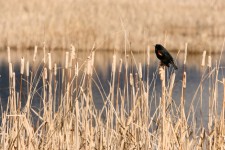Two-hundred miles of flying and we only crossed one road 15 minutes into the flight. The rest of the flight was ridge after ridge of mountains in the northernmost mountain range in the United States–the Brooks Range. Every mountain range is unique and the Brooks Range is no exception.
Located entirely north of the Arctic Circle in the northern third of Alaska, the Brooks Range spans 700 miles from the west coast along the Bering Sea into Canada’s Yukon Territory. The Brooks Range is considered the northernmost reach of the Rocky Mountains.
Over those 700 miles east to west, only one road crosses the range at Atigun Pass–the Dalton Highway (also known as the Haul Road). In comparison, the Cascade Range is also 700 miles long but dozens of highways and Forest Service roads bisect the range. There is literally only one road that crosses the Brooks Range. The only other means of transportation across the mountains are airplanes, boats, snow-machines, dogsleds and by foot.
The large swath of roadless mountains is primarily due to the protection of the range by Gates of the Arctic National Park and Preserve, Arctic National Wildlife Refuge and Noatak National Preserve.
On the aforementioned flight to Peters and Schrader Lakes from Bettles, the extensive width of the range was evident. At 150 miles wide, the Brooks Range is almost double the width of the Cascade Range (80 miles).
Similar to the transition in the Cascade Range from coastal forest to the dry Columbia Basin, the Brooks Range transitions from boreal forest on the south side to arctic tundra on the north side. The transition zone marks the northern extent of the tree line with only a few trees (mainly Balsam poplar) crossing over the Continental Divide. The southern slopes are also the northern limit of black spruce and quaking aspen.
For being in the Arctic, the Brooks Range has surprisingly few glaciers. Even though the mountains may be covered in snow from September to June, the climate is too arid to support glacial growth. Additionally, the sun never sets for 30 days in the summer. However, during the last ice age large valley glaciers carved extensive river valleys, serrated peaks, cirques and gigantic lakes.
The remoteness of the entire range eluded mapmakers for decades. When the United States purchased Alaska from Russia in 1867, the now-named Brooks Range was a blank spot on the map. Not until the 1880’s and 1890’s did mapping begin by Navy expeditions, the Revenue Marine Service (now the Coast Guard) and gold prospectors. The entire Brooks Range was completely mapped by 1911 but wasn’t named until 1925 (after Alfred Brooks, chief USGS geologist for Alaska from 1903 to 1924).
Even one-hundred years after it was mapped, there is still debate on the highest peak. Some sources claim Mount Chamberlin to be the highest peak at 9020 feet while others claim Mount Isto to be the highest at 9060 feet. One thing is for certain, the Brooks Range is like no other.

